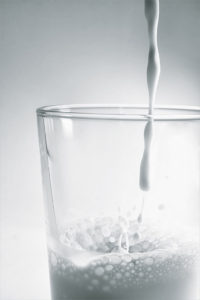
Almost 100% of Americans have this common beverage in their refrigerator. But, did you know that this common beverage could contribute greatly to the heart disease epidemic in America. I’m talking about milk. And while some experts may disagree with this article, it still good to be informed.
In this article from sooperarticles.com, they show how the adulteration of this beverage can cause multiple health problems:
“The Hidden Dangers of Homogenized Milk
Milk is nature’s way of providing substance from a mother to her young. It is a perfect delivery mechanism to supply an infant with lactoferrins, immunoglobulins and protein – necessary nutrition for development. Homogenization takes that perfect process and transforms it into something else. The goal of treating milk is to add consistency to the liquid. Without it, the cream would separate. While the end goal is practical, the means add hidden dangers to what is a naturally healthy drink.
What Homogenization Does to Milk
Milk contains butterfat globules, or lumps, that rise to the top of the liquid. Homogenization is a blending that breaks down the lumpy areas, so it has a more consistent texture – an appealing trait particularly for commercial distribution. Without this mechanical process, you would feel and taste the butterfat…or scrape the cream off the top!
The Danger of Homogenization
Homogenization is an effective way to create a more appealing texture for milk, but it also changes the base structure of the proteins. Raw milk is easier to digest than homogenized products. Once altered through homogenization, milk becomes harder for the body to process.
Each system in the body has a function. Part of the job of the digestive tract is to filter foods. Like most filters, smaller substances can slip through the grid. Through the process of homogenization, the long chains of proteins are broken down into tiny units that do not digest properly. These smaller chains slip through the filter to enter the bloodstream.
The immune system’s job is to protect the body from foreign invaders. When it detects a foreign body, the system takes action to contain and destroy it. This is the very same process that occurs when you get an infection. When undigested protein enters the bloodstream, it has the potential to trigger an immune response which can lead to inflammation and a myriad of unpleasant symptoms.
The same mechanism that breaks the protein chains will also reduce the size of the fat globules in the milk. The butterfat does not disappear. The lumps just gets so small you don’t know they are there. This makes them tiny enough to evade the filter in the digestive tract. Once in the blood, that fat can increase the risk of heart disease.”
The article continues to comment on homogenization and hormones as well as other issues associated with altering milks natural state. You can read the rest of the article over on sooperarticles website by clicking the link below:
Image courtesy of: xavivie
